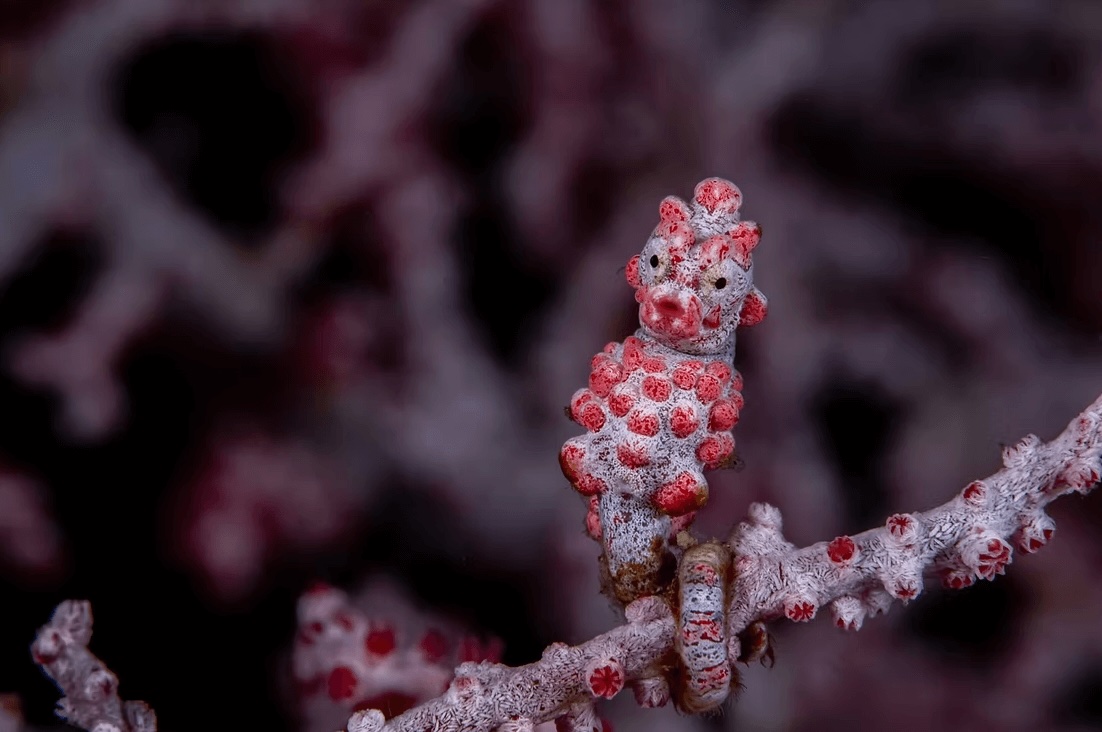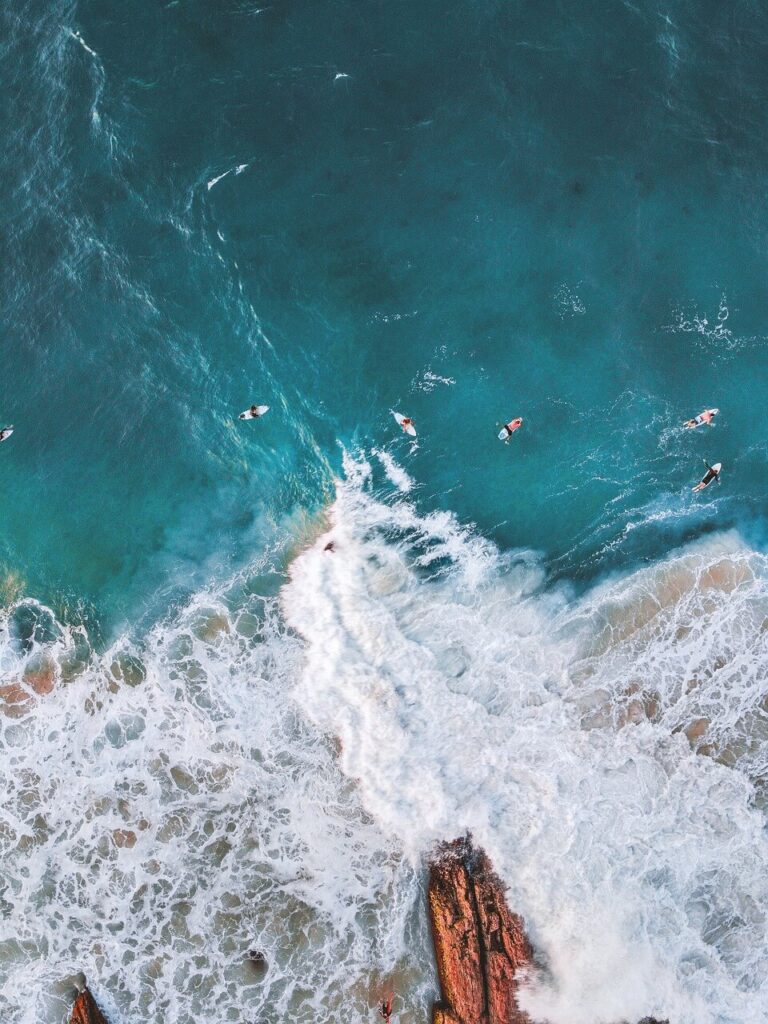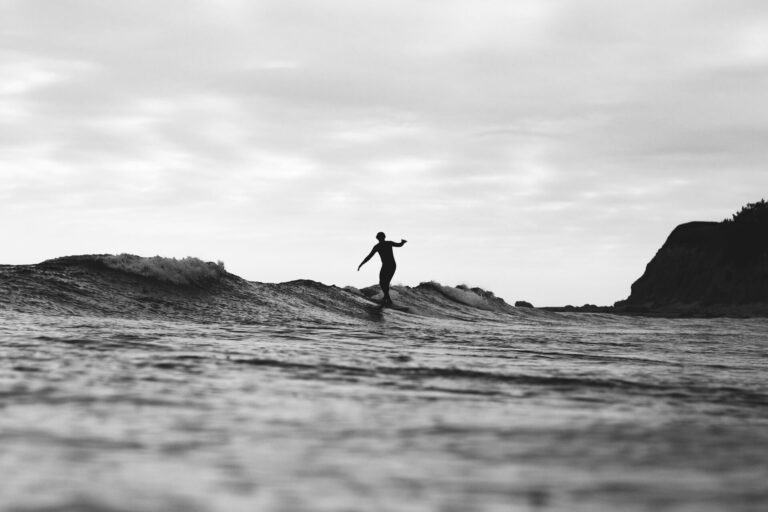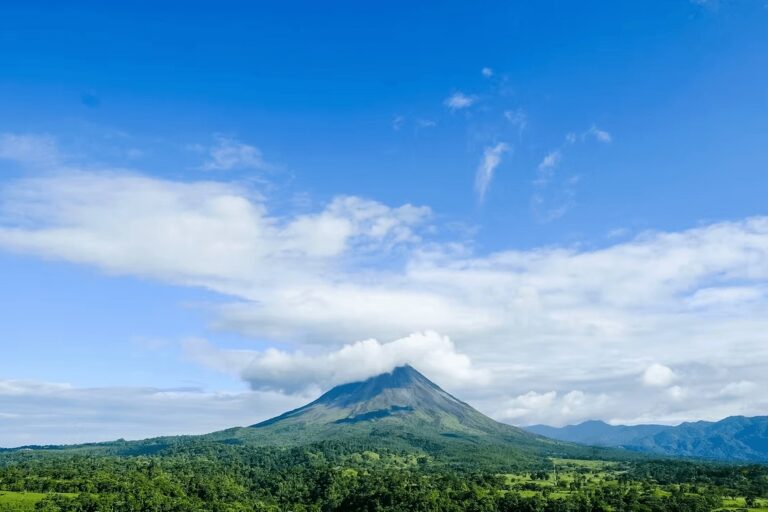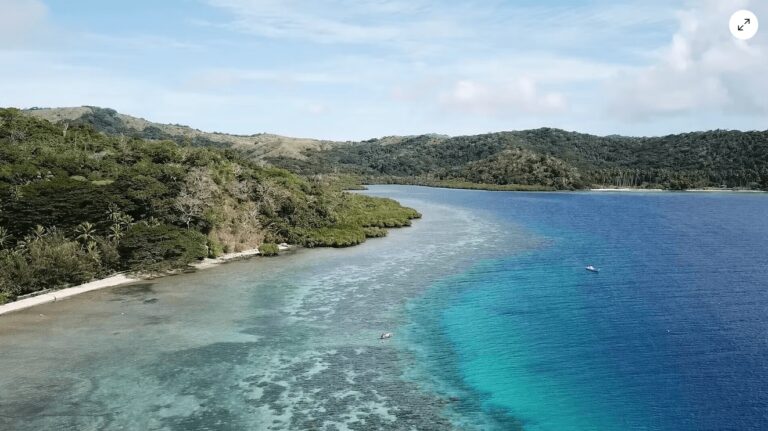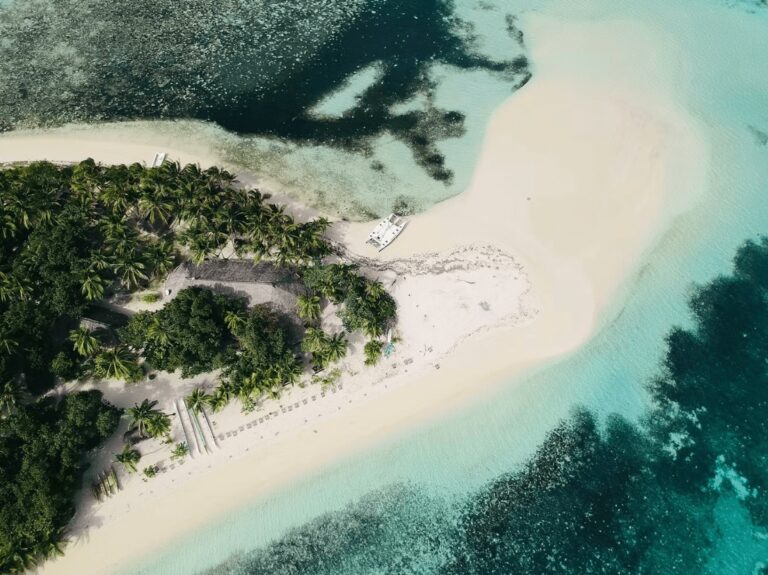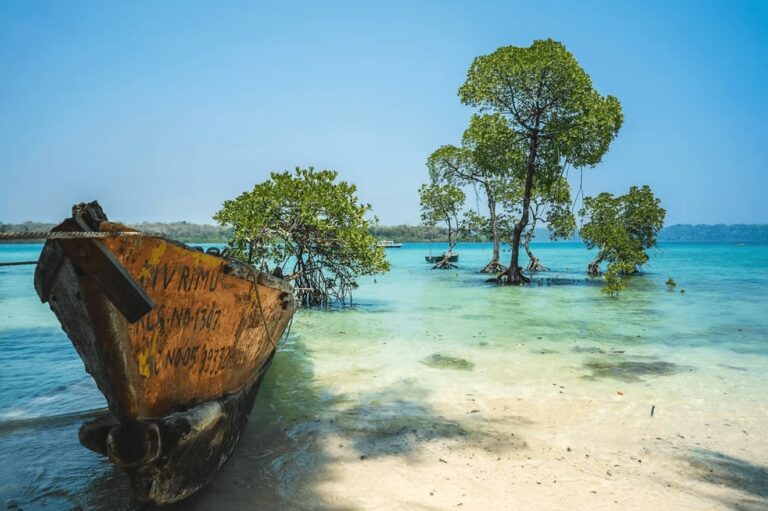Best places to dive in the Coral Triangle + conservation challenges
Looking for the best places to dive in the Coral Triangle? Discover some of our favourite underwater destinations in the region and how to dive them responsibly.
Spanning the tropical waters of Indonesia, Malaysia, Papua New Guinea, Philippines, Solomon Islands and Timor-Leste, the Coral Triangle is considered the global epicentre of marine biodiversity.
Over 600 species of reef-building corals form the living foundation of the Coral Triangle. Together, they provide essential habitat, food and shelter for the fish and invertebrates that call these waters home.
Scuba diving in the Coral Triangle means encounters with thousands of colourful reef fish, together with massive whale sharks. Tiny pygmy seahorses perfectly camouflage themselves among the corals and the seafloor is alive with strange and fascinating invertebrates.
Fringing the coastlines are mangrove forests and swaying seagrass meadows that serve as fish nurseries and feeding grounds for dugongs. Nearby, endangered sea turtles haul themselves ashore on isolated island beaches to lay their eggs.
The Coral Triangle’s astonishing biodiversity arises from the perfect combination of its geographical location, water conditions and the interconnected web of life that thrives here. That being said, much remains to be fully understood and documented by scientists.
This spectacular ecosystem not only supports an explosion of life beneath the waves. It also provides food, livelihoods and coastal protection for over 120 million people living in the region.
In this article, we’ll highlight six of the best dive destinations in the Coral Triangle to help plan your scuba vacations for years to come.
We’ll explain the challenges being faced by the region as a result of climate change and other human impacts. Additionally, we’ll touch on ways that you, as a diver, can help to preserve these waters for the benefit of both nature and humanity.

This article contains affiliate links, which means when you make a purchase through that link, we earn a small commission. Affiliate links come at no cost to you and ensure our content remains free!
Philippines
Offering an incredible diversity of dive sites and exceptional marine life encounters, the Philippines has well and truly established itself as one of the world’s top dive destinations.
It sprawls across the northern tip of the Coral Triangle, encompassing the pristine reefs of Tubbataha, the biodiverse waters of the Verde Island Passage and the remote Sulu Archipelago.
Designated as a UNESCO World Heritage Site is Tubbataha Reefs Natural Park. It’s known for having some of the most unspoiled and healthy coral reefs on the planet. Divers lucky enough to descend into these protected waters will encounter thriving corals and a kaleidoscopic range of fish, as well as whales and sharks.
With dive sites ranging from deep walls and drop-offs to shallow coral gardens, the Verde Island Passage caters to divers of all skill levels and interests.
For those seeking a more remote diving experience, the far-flung Sulu Archipelago beckons with its pristine coral reefs, untouched by mass tourism.
Wreck divers flock to Coron with its World War II Japanese vessels. Meanwhile, Malapascua is the heartland for up-close encounters with thresher sharks.
You’ll find more info on the best places to dive in the Philippines here and a collection of eco-friendly Filipino dive resorts here.
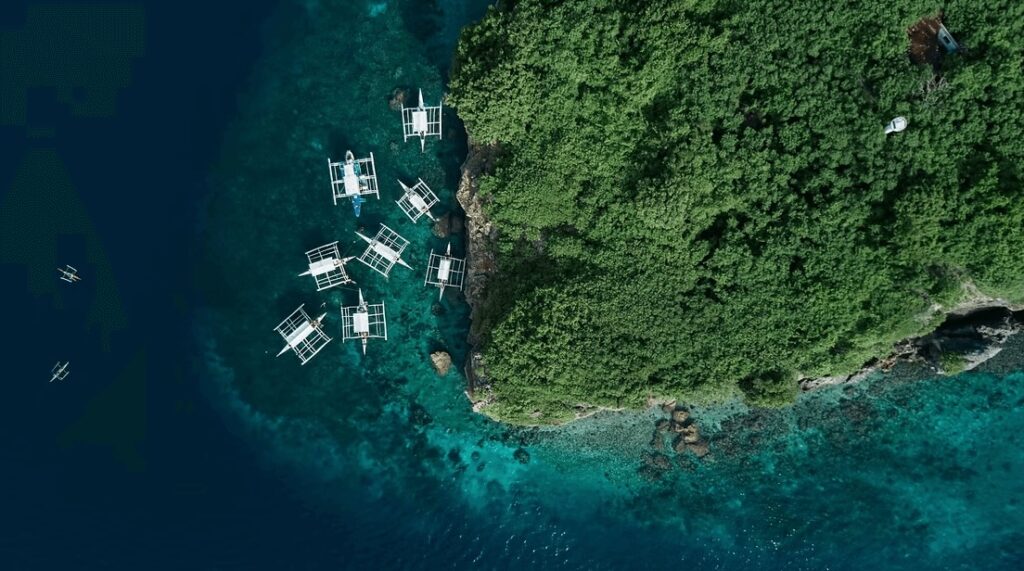
Indonesia
With over 17,000 islands spanning the equator between the Indian and Pacific Oceans, Indonesia is one of the best places to dive in the Coral Triangle. It boasts a staggering 20% of the world’s coral reefs, including a significant portion of the Coral Triangle.
The warm waters surrounding the archipelago are home to an astounding array of marine life, from tiny nudibranchs to mammoth whale sharks and everything in between.
Divers can explore pristine coral gardens, dramatic drop-offs and exhilarating drift dives, not to mention historic wrecks. Indonesia also boasts several unique underwater environments like volcanic lakes and submerged caves.
Some of the most famous dive areas in Indonesia include Raja Ampat with its unparalleled biodiversity and Komodo National Park. Here, you’ll encounter thrilling currents and the legendary Komodo dragons.
For beginners, there’s accessible shore diving on offer in the waters around Bali, as including the legendary USAT Liberty shipwreck. Just offshore lies Nusa Penida, a hotspot for seeing manta rays and the bizarre-looking mola mola.
In Sulawesi, you’ll find the marine life-rich dive sites of Bunaken and Lembeh Strait. The latter is famed for its incredible critter hunting and macro photography opportunities.
Looking for more inspiration? Discover 9 of the best places to dive in Indonesia here. Alternatively, check out these eco-friendly Indonesian dive resorts for a sustainable stay.

Malaysia
Near the western tip of the Coral Triangle is Malaysia. Its diving hotspots can be divided into Peninsular Malaysia and Sabah (the northern part of Borneo).
From the world-renowned dive spots of Sipadan to lesser-known gems like Tenggol and Redang islands, there is no shortage of locations for unforgettable underwater adventures.
Sipadan Island (off the coast of Sabah) is famous for its sheer coral walls dropping over 600 metres (2,000 feet) deep. It is also notable for its large schools of barracuda and bumphead parrotfish.
On scuba trips here, divers may encounter hawksbill and green sea turtles, manta rays and eagle rays, not to mention sharks and even whale sharks (in season).
The protected marine park around Pulau Redang boasts healthy coral gardens teeming with fish, plus giant clams and cuttlefish. Wreck diving is popular at sites like the HMS Prince of Wales and HMS Repulse, both of which date from World War II.
Also off the east coast of Peninsular Malaysia (but further south) lies Pulau Tenggol, notable for its healthy coral reefs.
For more information, check out 7 of the best places to dive in Malaysia + eco-friendly places to stay.

Papua New Guinea
Papua New Guinea is a bucket list destination for scuba divers seeking adventure in one of the world’s most biodiverse marine environments.
Located in the heart of the Coral Triangle, this island nation boasts over 45,000 square kilometres of reef systems. Collectively, they provide a habitat for a dizzying array of reef fish, sharks and rays.
Diving in PNG means exploring everything from shallow coral gardens bursting with anthias and clownfish to plunging walls draped in massive sea fans and patrolled by cruising pelagics.
Many of the dive sites are only accessible by liveaboard (adding to the frontier feel). However, there are a handful of highly-regarded dive resorts for a land-based vacation.
Signature dive areas in Papua New Guinea include Kimbe Bay, Milne Bay and Kavieng. Each has unique seascapes and endemic species to discover. Underwater photographers will be in heaven capturing wide-angle reefscapes, as well as macro critters like ornate ghost pipefish and flamboyant cuttlefish.
Back on land, Papua New Guinea offers fascinating cultural experiences with indigenous tribes still practicing subsistence lifestyles in remote villages.
Discover some of the best places to dive in Papua New Guinea here.
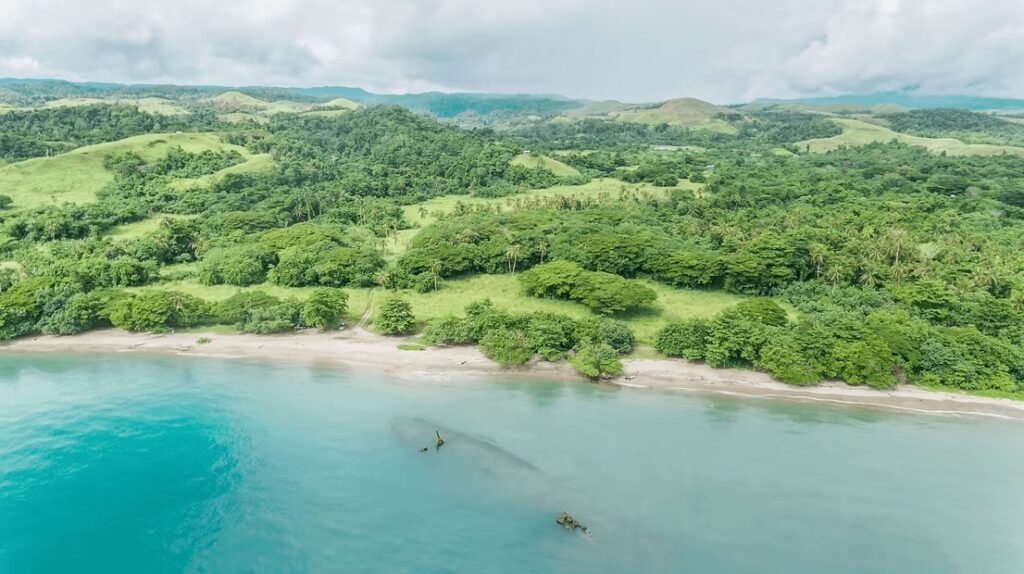
Solomon Islands
Tucked away in the southeastern corner of the Coral Triangle is the Solomon Islands. In our opinion, it’s an incredible dive destination for scuba enthusiasts seeking an off-the-beaten-path adventure.
This South Pacific archipelago is renowned for its healthy coral reefs, diverse marine life and fascinating World War II wrecks. The ocean floor is littered with submarines, planes and cargo ships (some still containing ammunition)!
In the Eastern Solomons, the Florida Islands beckon with their famed “Iron Bottom Sound”, a graveyard of over 1,000 sunken wrecks. This includes more than 600 aircraft, many suitable for recreational divers to explore.
To the northwest, the Russell Islands have something for everyone, from abundant wrecks at White Sand Beach to the unique experience of gliding between the walls of an island-cleaving crevasse.
The Solomons are also home to the world’s longest saltwater lagoon, Marovo Lagoon. It never fails to impress with its rainforest-cloaked islands and diverse dive sites.
With few crowds and a feeling of unspoiled beauty (both above and below the water’s surface), the Solomon Islands are what adventure diving dreams are made of.
You can learn more about planning a sustainable dive vacation in the Solomon Islands here.
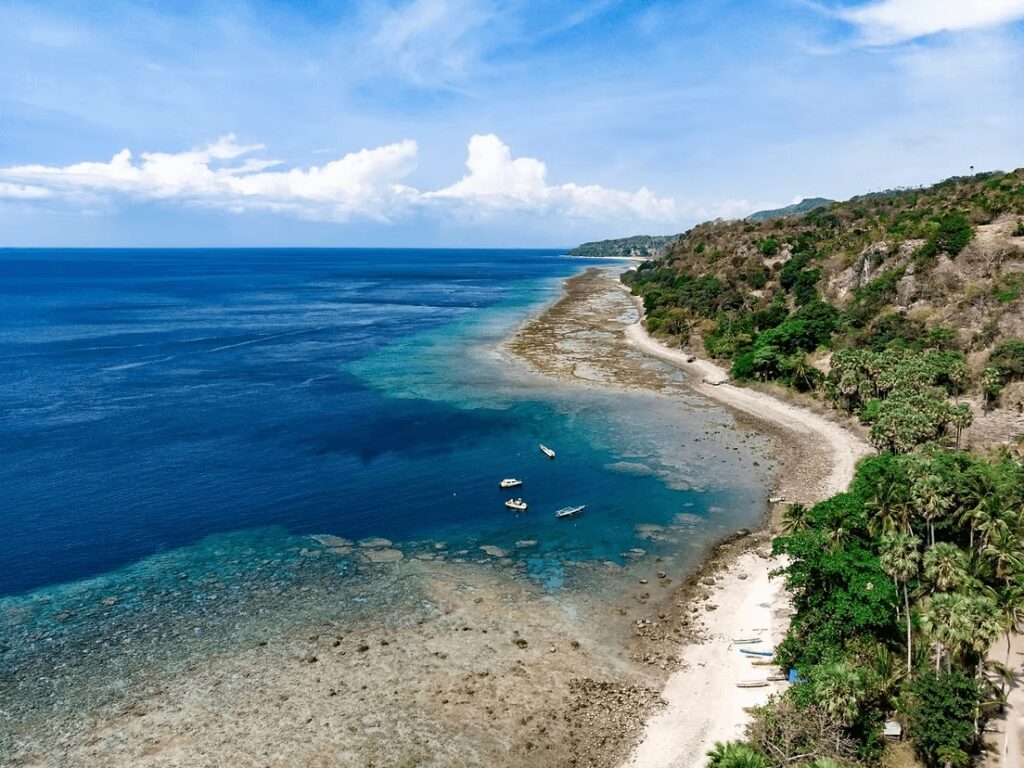
Timor-Leste
Hugging the southern edge of the Coral Triangle is Timor-Leste (also known as East Timor), the newest country in Southeast Asia.
It’s somewhat of a hidden gem for diving enthusiasts looking to get well off the beaten track. That’s provided you’re not seeking luxury. It’s important to remember the dive infrastructure is not as developed here as in other Coral Triangle destinations.
That being said, the rewards are worth it! Think pristine coral reefs and plunging walls, not to mention a huge diversity of open water pelagics.
Whales migrate through the area from September to November. And with few other divers around, you’ll have these once-in-a-lifetime experiences largely to yourself.
Popular dive sites in Timor-Leste include the reefs around Atauro Island, the walls of Dili Rock and the World War II wrecks scattered along the coast.
With a rich history, unique culture and stunning landscapes, this newly flourishing nation offers an unforgettable experience for adventure-seeking divers.
Discover everything you need to know about diving in Timor-Leste in our detailed article here.

Conservation challenges in the Coral Triangle
While the Coral Triangle is widely recognised as the global epicentre of marine biodiversity, it’s not without its survival challenges.
Aside from being home to an astonishing array of marine life, its underwater habitats support the livelihoods of millions of people.
Overfishing, destructive fishing practices, pollution and coastal development are among the most pressing issues the region faces, together with human-induced climate change.
The latter results in coral reefs that become weakened through bleaching events and ocean acidification, not to mention an increase in storm frequencies that threaten coastal communities.
As the demand for marine species increases, certain fisheries targeting groupers, wrasses, aquarium fish and invertebrates (such as sea cucumbers) are under significant pressure.
The practice of bottom-trawling, which involves dragging nets along the ocean floor, remains common in parts of the Coral Triangle. This has led to a decline of up to 95% in bottom-dwelling fish populations in areas that have been heavily trawled since the 1960s.
Other destructive fishing practices include using explosives (also known as dynamite fishing) and cyanide fishing. Both are illegal but still practiced in parts of the Coral Triangle.
Damage caused to coral reefs by these destructive fishing practices can take decades to recover. Additionally, they are dangerous to the humans involved.
Land-based pollution
In terms of land-based pollution, marine life throughout the Coral Triangle is subjected to runoff from logging, agriculture and urban development, bringing significant amounts of chemicals to their doorstep. An influx of fertilisers and sewage can lead to algal blooms that outcompete and eventually kill coral communities.
Also threatening marine life in the Coral Triangle is the wildlife trade. Sea turtles are among the most severely affected in the hunt for their shells and meat. Hunting for dugongs, shark fins and seahorses (which are dried and sold) is also threatening the survival of marine communities in the region.
Governments, NGOs and local communities are working tirelessly to address these challenges through a range of conservation strategies. These include the establishment of marine protected areas, the promotion of sustainable fishing practices and the implementation of community-based conservation initiatives.
Protecting the Coral Triangle will take a coordinated and collaborative approach. It needs to engage all stakeholders, from local communities to international organisations. It’s vital that effective conservation measures are developed that balance the needs of both people and nature.
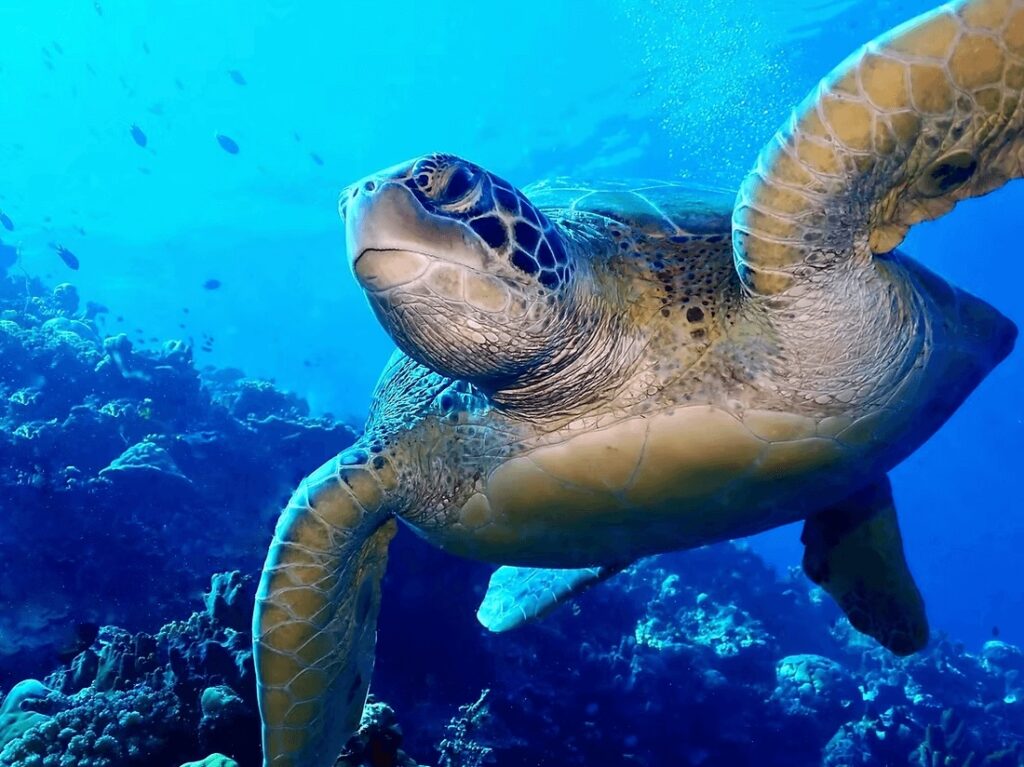
Tips for diving responsibly in the Coral Triangle
As one of the world’s most spectacular underwater destinations, the Coral Triangle attracts divers from around the globe. However, this popularity also puts immense pressure on the region’s ecosystems. Diving responsibly is crucial to preserve its marine biodiversity.
This all starts with education and awareness, learning about the fragility of coral reefs and how to minimise your impact.
Importantly, you should never touch, chase or harass marine life you encounter but observe (with wonder) from a distance. By mastering your buoyancy control, you’ll avoid accidentally touching or damaging corals, which can have devastating impacts.
It’s also important to use reef-safe sunscreen that won’t leach harmful chemicals into the water. We also recommend avoiding single-use plastics that may end up in the very environment you’re exploring.
Many dive operators in the Coral Triangle are leading by example, implementing eco-friendly practices like using mooring buoys instead of anchors and enforcing diver quotas to prevent overcrowding.
Some organise regular reef clean-ups. That being said, you can do your bit on any dive by collecting rubbish you find for safe disposal.
Sometimes, dive operators even offer opportunities for divers to get involved in coral restoration projects. That way, you can actively contribute to the regeneration of damaged reefs in the Coral Triangle.
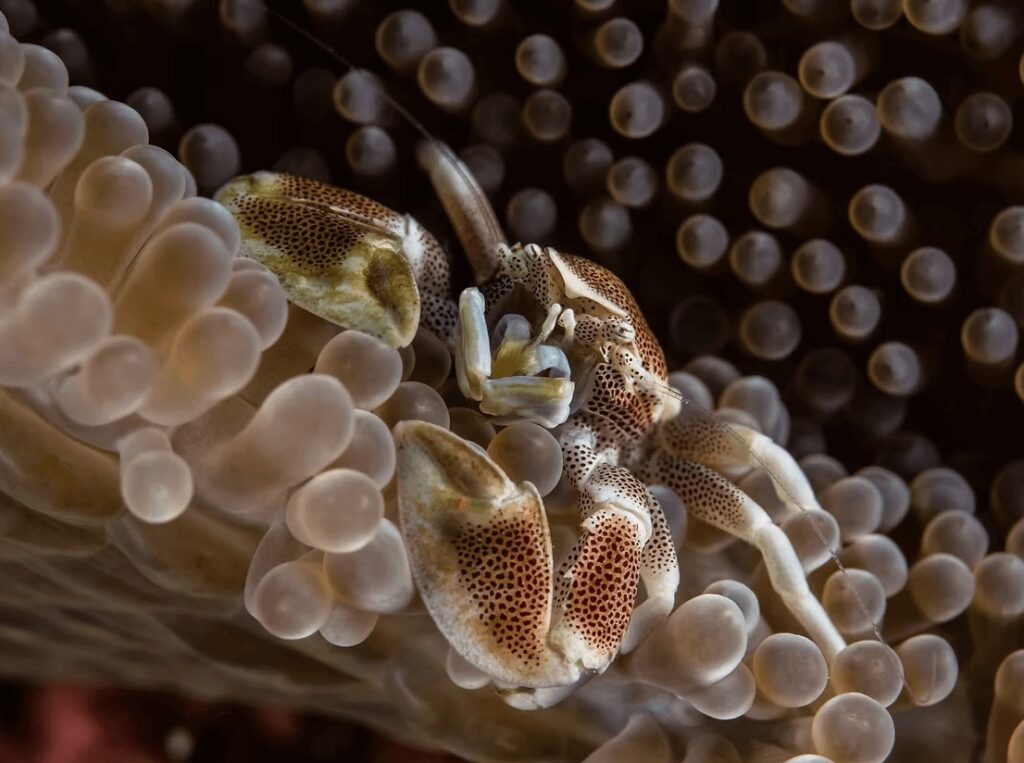
FAQs about diving the Coral Triangle
Where is the Coral Triangle?
The Coral Triangle is an expanse of tropical marine waters located between the Philippines, Indonesia, Malaysia, Papua New Guinea, Solomon Islands and Timor-Leste.
The region is globally renowned for having the highest diversity of coral reef species in the world. This includes over 600 different reef-building corals, more than 2,000 types of reef fish and six of the world’s seven marine turtle species.
Mangroves and seagrass beds also thrive in the shallow coastal areas, serving as crucial nursery grounds for juvenile fish and other organisms.
Scientists consider the Coral Triangle to be the global epicentre of marine biodiversity. Its incredible productivity supports the livelihoods of over 120 million people living in the region.
However, threats like overfishing, destructive fishing practices and climate change are putting immense pressure on this delicate ecosystem. Conservation efforts are vital to protect and sustainably manage the Coral Triangle’s irreplaceable marine resources for future generations.
Where are the best places to dive in the Coral Triangle?
Among the best places to dive in the Coral Triangle are Indonesia, Malaysia, Papua New Guinea, the Philippines, Solomon Islands and Timor-Leste.
Raja Ampat is often hailed as the most incredible place to dive in the region, with this remote Indonesian archipelago often described as the “Amazon of the Underwater World”. It boasts an astounding diversity of dive sites and frequent sightings of reef sharks, manta rays and wobbegong sharks.
The Philippines also has many superb dive spots, such as the UNESCO-protected Tubbataha Reefs Natural Park and Malapascua Island, famed for its thresher shark encounters.
The Solomon Islands offer pristine reefs and eerie World War II wrecks while Kimbe Bay in Papua New Guinea amazes with its huge sea fans and schooling barracuda.
For off-the-beaten-path scuba adventures, Timor-Leste with its developing dive infrastructure can’t be beaten.
What is Coral Triangle Day?
Coral Triangle Day is an annual celebration held on June 9th to raise awareness about the importance of this vast marine area.
Although it covers only 1.6% of the planet’s oceans, the Coral Triangle is home to over 600 species of reef-building corals, six of the world’s seven marine turtle species and more than 2,000 species of reef fish. It also directly sustains the livelihoods of over 120 million people, so its importance can’t be understated.
That being said, the region is under severe threat from climate change, overfishing and pollution. Coral Triangle Day aims to highlight these issues and encourage people around the world to take action to protect this unique underwater wonderland.
Events on the day include beach clean-ups, educational exhibitions, sustainable seafood festivals and fundraisers for marine conservation projects in the region. The ultimate goal is to ensure the Coral Triangle can continue to be an abundant source of life for generations to come.
Where is the best place to dive in the Coral Triangle for beginners?
For beginner scuba divers looking to explore the Coral Triangle, the island of Bali is an ideal destination. It features easily accessible dive sites and shallow coral reefs, as well as excellent infrastructure from an abundance of land-based resorts.
Flights from around the globe connect to Bali International Airport and most dive sites are located within a couple of hours’ drive of this aviation hub.
Dive sites like Tulamben (home to the USAT Liberty shipwreck) and Amed, with its sprawling coral gardens, provide gentle conditions and shallow depths perfect for novice divers to build their confidence.
Many reputable dive centres in Bali offer comprehensive training programs, experienced guides and modern equipment rentals, ensuring a safe and enjoyable underwater adventure.
Discover some of the best eco-friendly dive resorts in Bali here.
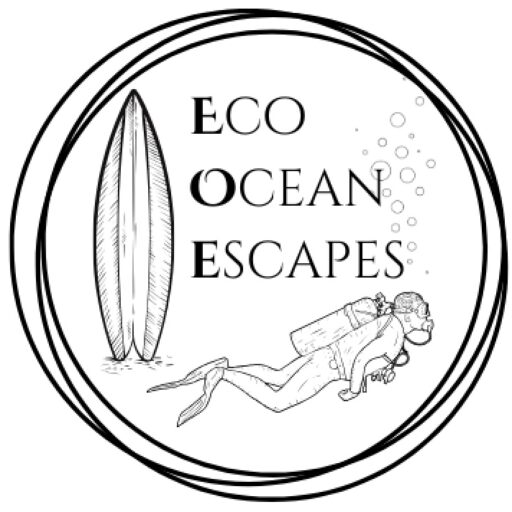
PLAN YOUR TRIP WITH OUR FAVOURITE RESOURCES:
Find hotels and resorts via Booking or Agoda
Book tours and experiences via Viator or GetYourGuide
Find a rental car via Discover Cars
Book flights via Kiwi or Booking
Search for buses and trains via 12Go or Omio
Get travel insurance via SafetyWing
Buy a digital eSIM with Airalo
By purchasing through our links, you’ll be supporting our website at no additional cost to you
About the authors
We are a team of passionate divers and surfers with decades of combined experience in the water and travelling to all corners of the globe. After years of chasing waves and descending into the deep blue, we’ve created this resource to highlight sustainably run surf camps, eco-friendly dive resorts and conservation-focused ocean trips to help inspire your next adventure.
Eco Ocean Escapes was born out of a love of the ocean, an obsession with travel and a concern about the impacts of our adventures on the environments we explore. Despite the benefits that surf and dive tourism can bring to local communities, we recognised that ocean-based adventures are not always managed in a sustainable manner.
Through our articles, we hope to inspire those seeking a responsible surf or dive trip that is all about supporting local communities, preserving our coastal environments and the incredible marine species that inhabit our oceans.
-
Sustainable Surf Tourism and Respecting Local Communities
Surf tourism has exploded over the last two decades. With travel becoming more accessible and social media exposing hidden spots, once-remote breaks in Indonesia, Central America, Morocco and the Pacific Islands are now iconic stops on global surf circuits. While surf travel brings income, jobs and global attention to coastal towns, it can also disrupt…
-
Inspiring Citizen Science Projects for Surfers + How to Get Involved
As surfers, we are intimately connected to the ocean – its rhythms, its wildlife and its health. Because of this relationship, many of us are looking for meaningful ways to protect the marine environments we love. One of the simplest and most impactful ways we can do this is by joining citizen science projects. These…
-
Understanding Marine Protected Areas (MPAs): Why divers should care
If you’ve spent time underwater (as a diver or snorkeller), you’ve probably noticed something: not all sites are beacons of health. Some reefs appear vibrant and full of life, while others show signs of stress – broken coral, few fish or algae-covered rocks. One of the biggest factors shaping the health of our oceans is…
-
Costa Rica: Best Marine Parks for Scuba Divers + Eco Dive Resorts
Costa Rica is a paradise for eco-conscious travellers and underwater explorers are no exception. With its healthy coral reefs, pelagic-rich waters and some of the most progressive environmental policies in the world, the country is a dream destination for those who want to dive responsibly. We’ve been lucky enough to visit Costa Rica several times…
-
Eco-Diving: Best Destinations for Sustainable Scuba Travel
As humans inspired by the underwater world, there is plenty of incentive to protect our coral reefs. Here at EcoOceanEscapes, we want to do our bit to save endangered marine species and keep our oceans free of trash. One impactful action we can all take is to choose sustainable diving destinations. These are nations (or…
-
Eco-Friendly Diving: How to Be a Sustainable Scuba Advocate
Understand the environmental impacts of diving and sustainable scuba practices in this comprehensive guide to eco-friendly diving. Any diver will tell you that being underwater is an incredible experience. It’s a world that not everyone has the opportunity to explore and the encounters we have with marine creatures can be life-changing. Watching manta rays soar…

We are a team of passionate divers and surfers with decades of combined experience in the water and travelling to all corners of the globe.
After years of chasing waves and descending into the deep blue, we’ve created this resource to highlight sustainable surf camps, eco-dive resorts and conservation-focused ocean trips to help inspire your next adventure.
Eco Ocean Escapes was born out of a love of the ocean, an obsession with travel and a concern about the impacts of our adventures on the environments we explore.
